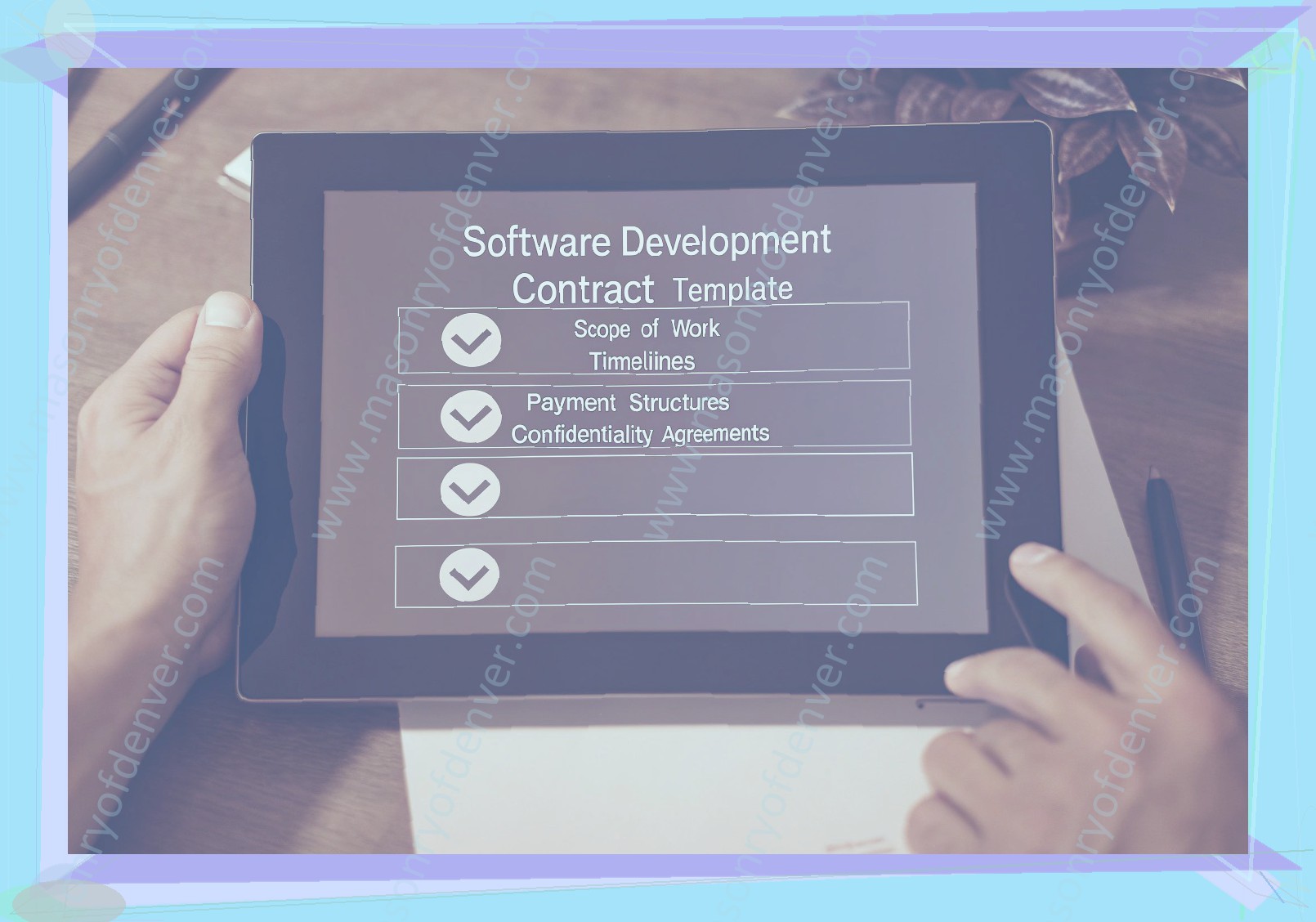Introduction to a Software Development Contract
In the fast-paced world of technology, the relationships between businesses and software developers can be complex. With all of the new services, software, hardware and combinations of these that exist today, interactions can no longer rely on verbal agreements and business card exchanges. The relationships have expanded both in content and scope, creating a need for a well-defined agreement between development teams and businesses regardless of size. Without a clearly defined software development contract , the returns on investment of time and resources can have a huge impact on the bottom line. Clear definitions of roles and responsibilities are crucial for the success of a project. Given that anyone from your local business or technical school might be creating an app in their spare time, it is critical that your business is protected from poor quality code, delays and other common headaches of software development projects that could affect your bottom line. For an important business undertaking such as software development, it is truly essential that your company has a well-defined agreement in place with terms that meet its specific needs.

Essential Features of a Development Contract
In order to create a comprehensive software development contract template, you should include various key components that delineate the expectations and obligations of each party. In a well-drafted template, all of the following points would be covered, with space for an attorney to expand on particular terms as necessary:
Scope of Work
The scope of work section (sometimes referred to as the "SOW" or "statement of work") sets forth the implications and limitations of your software development contract template. This section is where the developer will make a general statement that your project is within their scope of abilities, as well as describing what is included in the final product. If the developer does not include a key element in this section, their omission could be used against you if you tried to enforce it later on, arguing that the developer was responsible for adding the element.
Timelines
If you have specific time frames in which you want certain elements completed or the entire project delivered, your contract will detail the specifics. If there is a change, either on one side or the other, in the project’s progress or milestones, this is also covered through the timelines section. It is important for both the project owner and the developer to know exactly what the expected time frame is so that they can both be on the same page.
Payment Structures
When a customer agrees to pay a developer for the software development project, this payment structure must be outlined in detail. The schedule of payment may show the amount due up front, with installments due at certain milestones, or merely different percentages due at certain times through the project.
Confidentiality Agreements
If the project details or any components of the project must be kept strictly confidential from third parties, this information must be provided in the contract template. The confidentiality section in a software development contract template would usually include appropriate penalties for a breach, such as forfeiting any right to payment for work completed.
Key Terms in Software Contracts
A variety of important clauses typically feature in software development agreements to deal with the many different issues that can arise during the life cycle of the software.
One of the main clauses in any software development agreement is a description of the software to be developed. This clause will include issues such as the software specifications, delivery dates and deliverable milestones.
Heritage clauses are also key in software development contracts to ensure that ownership of any software which is not subsequently used ceases on termination of the agreement. Heritage rights are particularly important to suppliers of bespoke software to ensure that they have an unrestricted right to use the source code and object code contained in the software for any purpose once the agreement has terminated.
Dispute resolution clauses can either be neutral, voluntary (i.e. non-binding) or mandatory and should be considered by both the customer and supplier. Arbitration clauses are often included in software contracts to provide for confidential and more efficient resolution of a dispute than court proceedings.
Termination clauses are also an important aspect of software contracts. Termination provisions allow a customer to early terminate the contract for any reason or to do so only in certain circumstances. The grounds for termination reflect the most likely disputes that could arise in the contract.
Editing your Contract Template
Even with a comprehensive collection of software development contracts, templates often still need to be customized. This can be for a wide range of reasons, whether it is project specifics, particular features outlined in the appropriate addendum or other factors. These are some of the most important reasons for customizing a contract template:
- Project specifications: Each project is unique and may have certain concerns that need to be addressed. This includes whether a single developer will be creating the software, or whether it is a group effort. While they might need to complete the same tasks, they may be fulfilling different roles. Other areas that might need specific attention are the deadlines and milestones, the additional services and potential future projects.
- State laws: Depending on where you are located, either as a business or as an independent contractor or employee, there may be certain state laws that apply to your work. You may need to create different versions of the same contract for different jobs, depending on where you are located.
- International laws: There may also be international laws and regulations that apply to your work. If you are working on a project for a company from another country, the contract may need to specifically address which companies remain private under the contract by the local laws.
Benefits of a Contract Template
Contract templates provide the possibility of not only presenting a professional face to any potential client, but also increase consistency and reduce the time spent creating a contract from the start. By having already prepared an appropriate contract template, much of the work that usually goes into contract preparation is not necessary, for example, agreement text does not have to be prepared from scratch and essential clauses are already included. Having a contract template for development work also makes the process of modifying the terms to reflect the current job much quicker and easier, instead of spending hours writing, getting legal advice and changing the final document, a senior member of the team, perhaps a Director, can modify the template and speak to the client about the changes quickly and easily . This obviously saves the company money as internal costs relating to the contract negotiations, which include Director time, are reduced rather than a long and expensive delay going back and forth with a lawyer to get the contract ready. The company also benefits from being able to "close the deal" quicker with the client. The faster the company can begin work the better for the business, as several contracts may have crossed the desks of an employee, so it’s in the company’s interest to have contracts negotiated and signed in a fast, efficient manner. Because the same template is used over and over again for different clients and projects, it’s almost guaranteed that all the relevant terms of the project will be covered, as any mistakes in any project covered by the template would show up when renegotiating who gets the work, in any other project that has been covered by the same template.
Agreements to Avoid
One of the most common pitfalls that many clients encounter when drafting a software development contract template is failing to customize the template to suit their specific needs. Even if you use a generic template without any modifications, it is still likely that it will meet your needs for the particular services being provided and the costs that you are being charged. Any good attorney can point out the major pitfalls in this generic agreement but an even better course of action is to modify the agreement from the outset, even if it is only minor changes. For example, if the agreement allows the intellectual property rights (discussed below) to be owned by the developer until the total cost of the services have been paid in full, this clause should be amended to state that title will ONLY pass upon payment of the entire cost of the services. That way the developer has no right to all of the intellectual property under any circumstances.
Another common pitfall that clients fail to notice in a software development contract template is the restrictive requirements placed upon the client regarding the hiring of the contractor’s former employees. This is usually in the form of a restrictive covenant or noncompete that states that the client cannot hire any of the employees that were working on their project for 6 or more months after the end of the work performed. This clause is usually often left in as a "holdover" from the template as a way to protect the contractor. The solution to this is that the client simply must amend the provision to make it unreasonable or provide for a "carveout," such as allowing the client to hire any contractors for their project who have worked for their organization for at lease six months. A recent article discussed the importance of these provisions.
Signing the Contract
Once both parties have agreed on the terms of the software development contract, it’s time to finalize and formally sign the agreement. This process usually involves reviewing the contract one last time to ensure that all necessary amendments have been made, whether through negotiation or by drafting an addendum.
It’s recommended that both parties take the time to closely examine their details in addition to the specifics of the project. This includes the name and contact information of both the service provider and the client, as well as clearly registering the date of the arrangement and the planned duration. If any amendments to the agreement have previously been required, both parties should be diligent about making sure that the terms of the revised contract are agreeable and reflect the anticipated deliverables and payments as discussed.
One of the main issues that can lead to disputes in a software development contract is the failure to accurately outline the timeline for project delivery . As has been discussed in this article series, it’s essential to have a clear schedule in place for the completion of various phases of the project so everyone is aware of expectations. It’s typically advisable to have a single point of contact for each party throughout the duration of the contract to secure communication and transparency. This contact point could also be an intermediary, such as an attorney, who is solely responsible for ensuring that all parties are abiding by the terms.
After taking the time to make sure that both service provider and client are in agreement with their responsibilities, as well as what the project entails, it’s time to sign the contract. Having both parties sign a written contract is a necessity to enter into any contract; this will provide both parties with legal protection going forward in case of any disputes.


